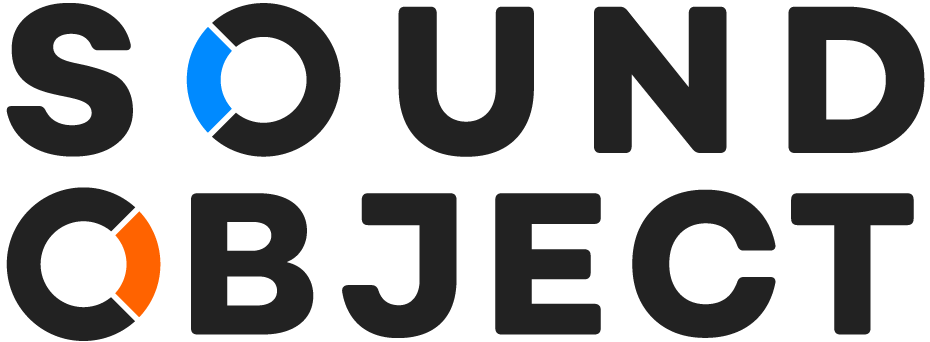What is audio branding?
Audio branding (also known as aural branding, sound branding, sonic branding or sonic identity) is the audio equivalent of a brand’s visual identity. It translates into the use of a set of sounds to define the identity of the brand. It can be sound effects, melodies, voices, songs, etc. Audio branding uses sound strategically and consistently to increase brand impact and value.
In their communication strategy, companies usually appeal to the sense of sight. Each company has its own visual identity; its logo, the graphics of its website are recognizable patterns and vectors of the brand’s discourse. This graphic universe is a showcase that the sonic identity comes to enrich. The sound embodies this same signature by deepening the sensory experience and it then invents the musical design of the brand: an imprint made of a sum of melodic, rhythmic and harmonic biases. Thus, the choice of unique sounds, of a defined tempo makes it possible to depict the universe of the company with even more power and singularity.

What elements constitute the sonic identity?
- The audio logo (also called sound logo). It is a series of musical notes and/or sound effects that generally accompanies the animation of a visual logo. The logo should be short (a few seconds), concise, easy to remember and should stand out for its fundamental and universal character. It is the signature of the brand and is associated with its image.
- The brand song or company song. It is a custom-made composition that can be instrumental or with voice and text. The brand song can then be declined in several different versions (instrumental version or with different arrangements) to accompany different commercial media of the company.
- On hold telephone music. This is background music specially composed to be used for customer call waiting. It is a personalized and catchy signature, an identification of the brand just by ear. It also accompanies mobile answering machine messages, and makes it possible to professionally harmonize the laptops of employees, to have music in the image of your company.
- The brand soundscape. This is a piece of sound composed for use in future environments and events as a background sound for presentations in spaces such as retail spaces, hotels, shopping malls, etc.
- The brand voice (also known as the corporate voice). It is a concrete and easily memorable voice that the brand uses in all its oral communications over a long period of time.
- The sonic brand book. It is a set of specific and coherent sounds made available for all the digital communication of the company. It is the equivalent of the graphic brand book (logo, corporate colors, etc.) for visual communication.
- The product sound. It is the sound emitted by the product itself, when the product marketed by the company has sound.
What are the strengths of audio branding?
Audio branding seeks to build a coherent brand experience in the sound field, taking advantage of a sense (hearing) that is generally little used by most companies. Although it is not a new discipline, it has been a booming field in recent years and is increasingly becoming an indispensable element in a company’s communication strategy. Used in targeted marketing actions, the sonic identity represents the image of the brand. It strengthens its positioning and allows it to stand out by even giving it a head start.
Here are some of its many benefits:
- Differentiation and recognition. A brand associated with a sound, voice or music is more easily recognized by its audience. The sonic identity conveys the fundamental and unique character of the company; its singularity allows it to differentiate itself and stand out. A coherent sonic identity creates adhesion and therefore preference.
- An inspiring appeal. If the graphic identity gives to hear for the eyes, the sound identity proposes to see with the ears. It creates magic and excites curiosity. New colors are available on the palette with the same purpose: a signature that builds loyalty and clearly displays the company’s DNA.
- Values and feelings. Kant says that “music is the language of emotions”. It is a cognitive experience that awakens the senses by telling a story and establishing an emotional bond. Music and sound have a great capacity to evoke emotions and feelings, which can then be associated with the brand.
In summary, a well-executed sonic identity can help generate a richer and more complete brand experience, promoting a sense of closeness and belonging. This helps to capture the attention of the public and is therefore an interesting lever to increase brand awareness and the effectiveness of marketing campaigns.

What are the guidelines for creating a successful sonic identity?
- Coherence. You have to stay consistent with the rest of the brand identity. The sound branding must be integrated as one more element of the overall identity; and therefore it must be aligned with the rest of the elements that compose it (visual identity, verbal identity, etc.). Before you start building a brand sonically, it’s essential to be clear about how the client wants to convey their brand. The brand experience must be coherent and homogeneous in all its expressions so that it contributes to fixing its image in the targeted objective positioning.
- Originality. You have to go beyond obvious melodies or a simple jingle. To build your own identity, you have to approach all kinds of sounds related to the brand experience and value the most surprising and even provocative musical and sound options.
- Seeking memorability. The musical signature and sound created must be sufficiently distinctive and easy to remember, to be recognized as exclusive to the brand.
- Consistency. The repetitive aspect is of particular importance in this discipline of branding. Keeping the same sonic identity for a long time is essential for it to become established in the long term with customers.
- Defining goals. It is obviously essential that the sonic identity best represents the original and current values of a brand. But it must also transmit the ideological positioning that the company wishes to impose in the near future.
- Musicology. Beyond creativity, there is a scientific component around the world of sounds and their impact on the human brain. Elements such as tone or rhythm are essential when transmitting one sensation or another. It is important to rely on musicology studies when creating music design.l.
- The application guidelines. Once the sonic identity is complete, it is essential to write a document that will formalize its practical implementation and guide the company in the use and choice of the various musical and sound content in its advertising, event, corporate and digital communication.

